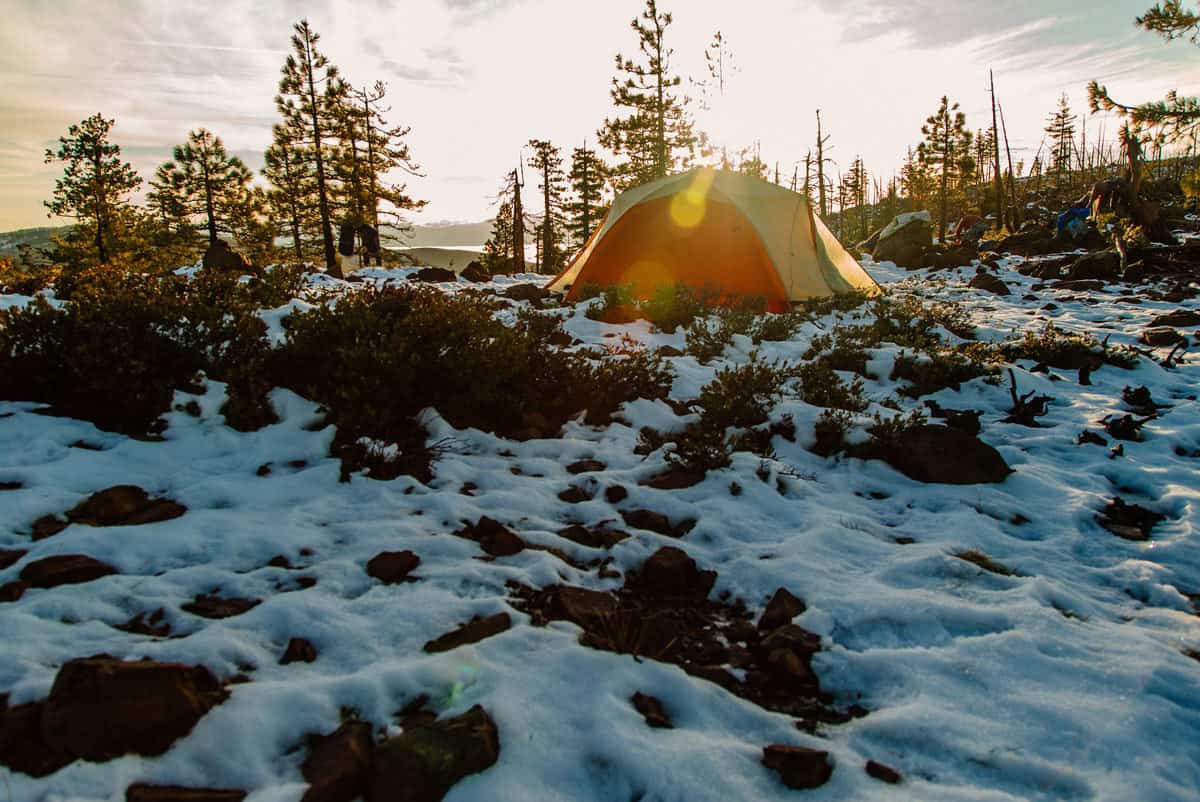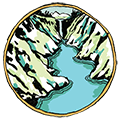Rough and Ready Creek is a tributary of the upper Illinois River. I fell in love with it after my initial visit in 2011 and subsequently returned three more times to paddle this uniquely special creek. My most recent expedition with NWRC guides Nate Wilson and Ryan Saevitz involved carrying our gear for a day and a half to paddle it’s remote upper reaches.

The most challenging part of running this upper section is being there when the conditions are right. You need to go in the winter after a warm, heavy rain so there is enough water in the creek and little or no snow along the high elevation access trail.
The Hike In
Like most rivers and creeks in and around the Kalmiopsis Wilderness our trip started with a lower body workout and a bushwhack down to the river. We began our hike at the Forest Service Port Orford cedar gate. The first part of our route was a road which runs into the Chetco Divide Trail.

The trail traverses a broad stony ridge between the Baldface and Rough and Ready Creeks watershed in the U.S. Forest Service’s 2004 proposed South Kalmiopsis Wilderness Addition.
At about mile eleven in our journey we camped in a snowstorm along this ridge and just south of the Kalmiopsis Wilderness boundary.

The next morning we woke up to blue skies and headed north into the Kalmiopsis to see Rough and Ready Lake for our first time.

Then we headed back to our campsite and headed east towards Rough and Ready Creek.

Our downhill hike to the creek took us through remnants of the Biscuit Fire punctuated by Port Orford Cedars and serpentine Darlingtonia fens. The wetlands are one of the rarest habitat types in North America. The presence of the Darlingtonia californica is indicative of a constant flow of cool water. We finally reached the creek in the late afternoon. We inflated our kayaks, packed our gear, and started paddling!

On the River
We immediately enjoyed the character of the creek. There were many fun, boat-scoutable rapids and when we chose to scout it was always at river level. After an hour or so on the river we found a beautiful camp on a big bench on the left.

We put on the next morning knowing that a narrow and steep canyon was coming up in less than a mile. We enjoyed some fun Class III rapids before the creek walls narrowed and the gradient increased.

While paddling the second rapid of this steeper section the serpentine rock tore a six inch gash in my prototype AIRE expedition Bakraft kayak. This 10 lb kayak made from an experimental material was loaded down with me and 80+ lbs of gear making it tricky to get to shore so I had to repair it on a rock island.

One of the great features of AIRE boats is field repair is very manageable on cold rainy day. I put some Tear Aid over the gash through the inner bladder and sewed up the outer fabric. After an hour long delay we were paddling again.
The gorged up section downstream was full of many great back to back Class IV rapids which ended with the biggest rapid on Rough and Ready Creek, Darlingtonia Falls. J.R. Weir and I ran this rapid when we hiked up from the bottom on my second visit to Rough and Ready Creek. It was nice to know where we were with precious daylight running out. After a quick scout Nate and Ryan had beautiful lines down the left side.

Below here we came to the beautiful Island Rapid which was quickly followed by the confluence with the South Fork of Rough and Ready Creek.

We took a quick hike up the South Fork before paddling the remaining way to our car.
The Place
We see something new each time we paddle the mainstem of Rough and Ready Creek to the take out. More ancient Port Orford cedar and Darlingtonia decorated springs dot its banks. The bare branches of wild azalea and rare willow – their base and roots submerged most of the winter – poke above the clear waters of the creek.

The landscape of Rough and Ready Creek and the surrounding South Kalmiopsis is uniquely special with a plethora of rare plants that have adapted to the lack of nutrients in the soil. The most visible during the winter months are:
- Darlingtonia californica (aka Pitcher Plant) is one of these that has adapted to a lack of nitrogen in the soil by attracting and digesting insects.
- Port Orford Cedar is a rare conifer that is found only in Southwest Oregon and Northwest California. This water loving cedar’s roots provide stability to stream banks and shelter rare orchids and other plants growing along Rough and Ready Creek. Rough and Ready Creek is one of few remaining watersheds where the Port Orford Cedar has not been affected by a non-native, water-borne root pathogen that’s also transported by mud and soil on vehicles.
The U.S. Forest Service has found Rough and Ready Creek eligible to become a National Wild and Scenic River. If you’re interested in learning more about this fascinating watershed and the nickel mining that threatens it, please visit KalmiopsisRiver.org’s Rough and Ready Creek page.
Thank You
I want to thank all the people who have been part of previous explorations Rough and Ready Creek: Dan Martin, Kevin Ely, J.R. Weir, Lori Turbes, Daniel Wakefield Pasley, Nate Wilson, Chrissy Wilson, Colby Elliot, and Ryan Saevitz. Each of the previous trips laid the groundwork to make this trip happen.

Thank you to AIRE, Lifeproof, and Big Agness for providing gear necessary to make this trip possible.

